Please use link to open the article: In-Memoriam for Irving Wender (1915–2016)
In Memoriam: Juan F. Garcia de la Banda (1921–2015)
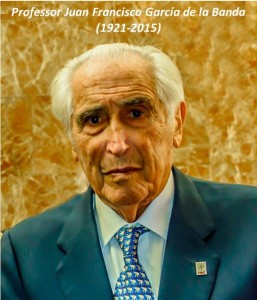 Juan Francisco García de la Banda was born in Madrid (Spain) in 1921. He studied Chemistry and Mathematics in the Universities of Valladolid, Oviedo and Madrid, completing his Bachelor Degree in 1943. In 1948 he presented his PhD dissertation (“Relation between calorific conductivity and vapor pressure of high boiling point substances”) supervised by Professors Foz-Gazulla and Colomina and carried out at the Instituto de Química Física “Rocasolano” (IQFR) of the Spanish Council for Scientific Research (CSIC).
Juan Francisco García de la Banda was born in Madrid (Spain) in 1921. He studied Chemistry and Mathematics in the Universities of Valladolid, Oviedo and Madrid, completing his Bachelor Degree in 1943. In 1948 he presented his PhD dissertation (“Relation between calorific conductivity and vapor pressure of high boiling point substances”) supervised by Professors Foz-Gazulla and Colomina and carried out at the Instituto de Química Física “Rocasolano” (IQFR) of the Spanish Council for Scientific Research (CSIC).
He studied in Bristol between 1951 and 1952 with Professor William E. Garner with Dr. Dennis A. Dowden at the Catalysis Group at ICI. Afterwards, he returned to Spain, within the framework of the IQFR and founded the “Laboratory on Catalysis”, which became the birthplace of the Instituto de Catálisis y Petroleoquímica (ICP) in 1975. He was the first Director of the ICP and the individual most responsible for enhancing the scope and quality of research in catalysis and biocatalysis in Spain.
He participated in the First International Conference on Catalysis (ICC) held in Philadelphia in 1956 and maintained personal and professional links with many U.S. catalysis researchers, especially through his personal friendship with Dr. Heinz Heinemann throughout their careers. He proposed and organized the 1st Iberoamerican Symposium on Catalysis, held in Madrid in 1968, the first in a series that will celebrate its 25th edition this year in Montevideo.
Professor Garcia de la Banda served in several influential positions within the research and development and scientific structure at the highest levels in the government of Spain. He is without doubt the most influential and impactful promoter of catalysis research in Spain in the 20th century and the key individual in the formative years of the catalysis community in Spain.
His presence and his sage advice will be missed.
Dr. Enrique Sastre
Vice-Director, Instituto de Catálisis y Petroleoquímica, CSIC,
Madrid, Spain.
In Memoriam: John T. Yates, Jr. (1935–2015)
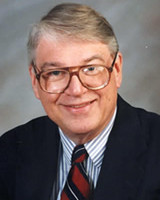 Professor John T. Yates, Jr. received his B.S. degree from Juniata College and his Ph.D. in physical chemistry from M.I.T. After three years as Assistant Professor at Antioch College, he joined the National Bureau of Standards, first as a NRC Postdoctoral Research Fellow and then as a member of its scientific staff. His research in the fields of surface chemistry and physics, including both the structure and spectroscopy of surface species, the dynamics of surface processes, and the development of new methods for research in surface chemistry, kept him at the forefront of this field of science throughout his long and distinguished career.
Professor John T. Yates, Jr. received his B.S. degree from Juniata College and his Ph.D. in physical chemistry from M.I.T. After three years as Assistant Professor at Antioch College, he joined the National Bureau of Standards, first as a NRC Postdoctoral Research Fellow and then as a member of its scientific staff. His research in the fields of surface chemistry and physics, including both the structure and spectroscopy of surface species, the dynamics of surface processes, and the development of new methods for research in surface chemistry, kept him at the forefront of this field of science throughout his long and distinguished career.
Professor Yates joined the University of Pittsburgh in 1982 as the first R.K. Mellon Professor of Chemistry and as Founding Director of the University of Pittsburgh Surface Science Center. He established and led the Surface Science Center and mentored 40 Ph.D students and more than 100 senior researchers at Pittsburgh. He moved to the University of Virginia in 2006 as a Professor and Shannon Research Fellow; there, he established a new research program in Surface Science and became active in the new field of astrochemistry.
Professor Yates served as Associate Editor of Chemical Reviews and of ACS Langmuir and on the Advisory Boards of Chemical & Engineering News and Chemistry World. He was active as a member of the AVS Boards of Directors and Trustees and as Chair of the AVS Surface Science Division, the APS Division of Chemical Physics, and the ACS Division of Colloid and Surface Chemistry. He chaired three Gordon Research Conferences.
He was the recipient of the AVS Medard Welch Award, the ACS Arthur W. Adamson Award for Distinguished Service in the Advancement of Surface Chemistry, the ACS Peter Debye Award in Physical Chemistry, and an Alexander von Humboldt Senior Research Award. He was elected to the National Academy of Sciences in 1996. During his distinguished career, he co-authored more than 700 articles in the leading journals of chemistry and physics.
We mourn his passing as we celebrate his achievements.
In Memoriam: Theodore A. Koch (1925 – 2014)
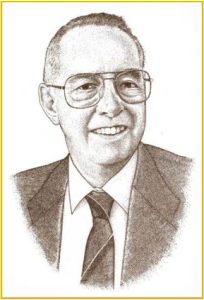 Dr. Theodore A. Koch, 88, a retired DuPont research scientist passed away peacefully at his home in Wilmington, Delaware on September 13, 2014.
Dr. Theodore A. Koch, 88, a retired DuPont research scientist passed away peacefully at his home in Wilmington, Delaware on September 13, 2014.
A native of upstate New York, Koch studied chemistry at St. Michael’s College in Burlington, VT and the University of Pennsylvania in Philadelphia, PA, earning his Ph.D. in chemistry in 1952. He joined the DuPont Co. ultimately retiring from its Nylon business unit as a DuPont Fellow after 48 years of service. An authority on heterogeneous catalysts, Koch spent his entire career developing chemical processes and bringing them from the benchtop to commercialization with marked creativity and tenacity.
Notable technical accomplishments in Koch’s career included developing a new catalyst for nitrous oxide destruction (an ozone-depletion byproduct from Nylon manufacture), development of a new process for hydrogen cyanide manufacture and improvements to many polymer intermediates processes. Koch received the award for Excellence in Catalytic Science and Technology from the Catalysis Club of Philadelphia in 1994 and the Lavoisier Medal for Technical Excellence from the DuPont Co. in 1998. His external roles included adjunct Professor of Chemical Engineering at the University of Delaware; president of the Catalysis Club of Philadelphia; and membership in the North American Catalysis Society, the American Institute of Chemical Engineers, the Organic Reactions Catalysis Society, and the American Chemical Society. He held 29 patents and co-authored 18 journal articles and one textbook on catalysis entitled, “Catalyst Manufacture.”
Koch is survived by his wife of 62 years, Anne, his five children, five grandchildren and extended family. His memory lives on through the Theodore A. Koch Fund that will recognize and reward Delaware Valley achievements in catalysis research. Charitable donations may be made to the Catalysis Club of Philadelphia, Ted Koch Fund, c/o Stephen Harris, Treasurer, Renmatix, 660 Allendale Road, King of Prussia, PA 19406.
In Memoriam: Helmut Knözinger (1935–2014)
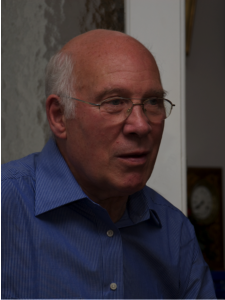 Helmut Knözinger passed away at his home in Munich on January 12, 2014, at age 78. The catalysis community loses an active member of many years, a contributor of outstanding science, leader in various organizations, editor of key publications, and partner in vibrant collaborations.
Helmut Knözinger passed away at his home in Munich on January 12, 2014, at age 78. The catalysis community loses an active member of many years, a contributor of outstanding science, leader in various organizations, editor of key publications, and partner in vibrant collaborations.
Knözinger studied Physics at Ludwig-Maximilians-Universität München, with Physical Chemistry becoming his area of emphasis during his time as a doctoral student. His dissertation (1961), which was supervised by Georg-Maria Schwab, was his entrance into the field of catalysis; he investigated the suitability of the catalytic decomposition of methyl formate as a test reaction. He continued on with the Habilitation (1967), the qualification for professorship within the German academic system (Doctor of Sciences in others). The topic of the associated thesis was the dehydration of ethanol on alumina, a material that would later be the subject of his perhaps most famous article. Knözinger held various academic positions at Ludwig-Maximilians-Universität München, with an interlude as a guest professor at the Universidad Central de Caracas, Venezuela (1968/69), before he arrived at his final rank of professor (1980). He remained true to his alma mater until his official retirement in 2000, after which he kept an office and continued to be active as a researcher and editor.
Knözinger researched in many different areas of catalysis and excelled at developing and applying spectroscopic methods for the characterization of catalysts. Each of the classes of materials in his focus can be associated with methods that he tailored for the purpose of their investigation. He made significant contributions to the characterization of acid-base properties of oxidic materials, analyzing the OH groups spectroscopically, and extensively using carbon monoxide (CO) as a probe but also exploring much sought-for probe molecules for basic surface properties. This work is documented in many original and review articles, including those on alumina in Catalysis Reviews-Science and Engineering in (with Ratnasamy, 1978), on CO adsorption in Materials Chemistry and Physics (with Zaki, 1987), on weakly interacting probes for zeolites in Journal of the Chemical Society — Faraday Transactions (with Huber, 1998), and on acid-base characterization in the Handbook of Heterogeneous Catalysis (2008). Relating to his work on CO as a probe molecule, he also applied his skill in infrared spectroscopy to supported carbonyl complexes, of which he wrote in Angewandte Chemie International Edition (with Lamb and Gates, 1988). Oxides supported on other oxides was another focus area, with applications of the catalysts for example in hydrodesulfurization and selective catalytic reduction. In addition to probe molecule adsorption and IR spectroscopy — his forte, he applied Raman, UV-vis, and photoelectron spectroscopy. To investigate the mechanism of dispersion of oxides on other oxides, experiments to observe the transport were designed, and in a long-lasting collaboration with the Institute for Plasma Physics in Garching (a Max-Planck Institute), thin film model catalysts were investigated by surface science techniques such as ion scattering and Auger electron spectroscopy. Examples of this work are the articles on molybdena supported on alumina in Journal of Physical Chemistry (with Jeziorowski, 1978) or on solid-solid wetting in Surface Science in (with Leyrer, Margraf, and Taglauer, 1988).
Knözinger’s work was recognized with national and international awards, among them the Ciapetta Lectureship (1980), the Ipatieff Lectureship (1988), the Max-Planck Research Award (1995), the Prix Gay Lussac Humboldt Prize (1997), and the Alwin Mittasch Medal of Dechema (1998). He became an honorary member of the Hungarian Academy of Sciences in (1995), a member of the Academia Europaea (2000), and an honorary professor of Nankai University, Tianjin, China (2004). He was a member of chemical and catalysis societies, and helped organize national and international conferences on catalysis. Notably, he was first a member of the European Association of Catalysis and then later the representative of the Federal Republic of Germany in the Council of the European Federation of Catalysis Societies (1993–1999). He also acted as president of the International Association of Catalysis Societies (1996–2000).
As editor, Knözinger moved into the footsteps of Schwab, who had edited a handbook of catalysis. Together with Ertl and Weitkamp, Knözinger published the first edition of the Handbook of Heterogeneous Catalysis with five volumes in 1997. Such was the success that a second edition, with Schüth as additional editor and eight volumes, appeared in 2008. He served as an editor of Advances in Catalysis, in the years 1998 through 2011; under his reign, three volumes were dedicated to spectroscopic analysis of the working catalyst.
While Knözinger remained rooted in Munich throughout his career, he cultivated collaborations and exchange. He himself was an avid traveler and also a guest professor multiple times, in Caracas, Xianmen, Evanston, Amsterdam, and Paris. Researchers from around the world visited his laboratory (their provenience was, in fact, tracked by pins in a wall map at the institute), mostly to perform IR spectroscopic experiments using his specially designed apparatus. Guests were treated with graciousness and enjoyed Bavarian hospitality.
His constant interest in everybody’s research was manifest in his daily afternoon rounds through the labs with individual conversations, his reception of a knock at his office door, his overnight reading of manuscripts handed to him. His reliability and his self-discipline were exemplary. His advising was never forceful, promoting academic freedom and independence. A significant number of students achieved the doctoral degree under his guidance and are testament to his skill as an advisor and mentor. Knözinger was a gifted athlete in his youth and a mountain enthusiast; he instigated regular group outings – hiking in summer and skiing in winter. He created an atmosphere of togetherness that let team spirit and humor flourish and friendships be forged.
Knözinger was also a talented photographer and adhered to this passion throughout his life – his camera accompanied him on most occasions. The various photographs displayed in his office spoke of his skill, of his travels around the world, and his eye as an observer.
Helmut Knözinger’s presence and his views will be missed.
Friederike Jentoft
In Memoriam: George Donald Blyholder (1931–2013)
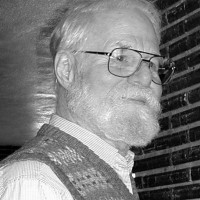 George Donald Blyholder was born January 10, 1931 in Elizabeth, New Jersey but he grew up in Kansas City, Kansas and Chicago, Illinois. He received his BA from Valparaiso U., his BS from Purdue U. in chemical engineering and a Ph.D. in chemistry from the University of Utah. His thesis was entitled “Kinetics of Graphite Oxidation” and a part of this was published with his advisor, the renowned kinetist Henry Erying. While a graduate student, he met and married Betty Sue Conrad. Following graduation, he did postdoctoral studies at the University of Minnesota and then at The Johns Hopkins University with Prof. Paul H. Emmett. His work with Emmett involved the use of C‑14 labeled ketene to study the Fischer-Tropsch reaction mechanism. In 1959, he moved to Fayetteville, Arkansas as a professor of chemistry at the University of Arkansas. There he was involved in pioneering research on the use of infrared spectroscopy to study catalysis. His publication “Molecular orbital view of chemisorbed carbon monoxide” in the Journal of Physical Chemistry in 1964 has become a classic publication with 719 citations and probably more where it is just referred to as the “Blyholder Model”. He retired in 1996, becoming an emeritus professor. He published more than 100 articles in scientific journals with most in the area of surface science. His death at age 82 was on Feburary 24, 2013.
George Donald Blyholder was born January 10, 1931 in Elizabeth, New Jersey but he grew up in Kansas City, Kansas and Chicago, Illinois. He received his BA from Valparaiso U., his BS from Purdue U. in chemical engineering and a Ph.D. in chemistry from the University of Utah. His thesis was entitled “Kinetics of Graphite Oxidation” and a part of this was published with his advisor, the renowned kinetist Henry Erying. While a graduate student, he met and married Betty Sue Conrad. Following graduation, he did postdoctoral studies at the University of Minnesota and then at The Johns Hopkins University with Prof. Paul H. Emmett. His work with Emmett involved the use of C‑14 labeled ketene to study the Fischer-Tropsch reaction mechanism. In 1959, he moved to Fayetteville, Arkansas as a professor of chemistry at the University of Arkansas. There he was involved in pioneering research on the use of infrared spectroscopy to study catalysis. His publication “Molecular orbital view of chemisorbed carbon monoxide” in the Journal of Physical Chemistry in 1964 has become a classic publication with 719 citations and probably more where it is just referred to as the “Blyholder Model”. He retired in 1996, becoming an emeritus professor. He published more than 100 articles in scientific journals with most in the area of surface science. His death at age 82 was on Feburary 24, 2013.
In Memoriam: Joe Hightower (1936–2014)
We have lost a great scientist, a great humanitarian, and a dear friend and supporter of our catalysis community.
https://chbe.rice.edu/Content.aspx?id=2147483997&blogid=102
Enrique Iglesia
President
North American Catalysis Society